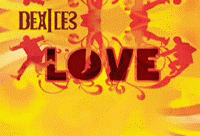The soundtrack to the Cirque du Soleil show of the same name, Love was a remix album produced by George Martin and his son Giles.
Love contains 37 named Beatles songs, but with elements of many more. The remix was a mashup combining elements from The Beatles’ multitrack recordings from 1963 to 1969, fan club recordings, outtakes, and live crowd noises.It’s a Da Vinci Code for Beatles fanatics, isn’t it? It’s the most supreme puzzle of all time. I wanted to have a competition to see if anyone could spot everything we’d done in the right sequence. No one will be able to do it.
Uncut
The album also contains a new string backing for George Harrison’s solo demo of ‘While My Guitar Gently Weeps’. This was George Martin’s final Beatles string arrangement. The album was also his final work as a producer, prior to his death in 2016.
It’s a funny word, ‘retirement’, because it suggests you’re giving up everything, and I certainly haven’t done that. But I’ve given up recording, because my ears aren’t good enough. This, however, was an offer I couldn’t refuse, when they asked me to produce the music for the show. It was such a challenge. But I couldn’t have done it without Giles. He’s my ears.
Sound On Sound
Love won twice at the 50th Grammy Awards on 10 February 2008, for Best Compilation Soundtrack Album and Best Surround Sound Album.

The background
The idea of a collaboration between The Beatles and Cirque du Soleil originated from George Harrison, who had been friendly with the company’s founder Guy Laliberté.
Initially, Cirque du Soleil were intending to use a new mix of Beatles songs which updated their sound, similarly to Junkie XL’s remix of Elvis Presley’s ‘A Little Less Conversation’. This idea “appalled The Beatles”, according to Giles Martin. Apple Corps’ Neil Aspinall contacted George Martin, who brought in his son to work on the project.
We took all the Beatles’ catalogue from tape, the original four tracks, eight tracks and two tracks and used this palette of sounds and music to create a sound bed.What people will be hearing on the album is a new experience, a way of re-living the whole Beatles musical lifespan in a very condensed period.
Work on Love began in November 2003. Neil Aspinall gave Giles Martin an initial brief to create a demo recording of “a gig that never happened” from The Beatles’ multitrack files.
It was Giles’s idea and he did it without my being here. I thought, fantastic. So did Ringo, he thought it was amazing.
Sound On Sound
Martin created a 13-minute demo sequence comprising ‘Get Back’, ‘Here Comes The Sun’, ‘I Am The Walrus’, and ‘Flying’, plus a mashup of ‘Within You Without You’ and ‘Tomorrow Never Knows’.
I was then interviewed by Apple, and I sat down with Neil, and we talked about how he’d like the show to get across, like a Beatles’ performance, since he was the Beatles’ road manager since they were at school. He told me, “I remember they would start with ‘Long Tall Sally’ and we’d finish.” And I said, “Perhaps I can create a live performance of a gig that never happened, starting off with drums, the band tuning up, just out of their tapes. Maybe I can try that.” And he said, “Have a go.” So I said to my dad, “How ’bout this?”The rule from the Beatles was that you have to use everything on tape. And that suited us down to ground. And, basically, the way it worked, I would try stuff. I would go in and actually use Logic, since I didn’t know how to use Pro Tools. I did kind of. (laughs). I always had people working for me, but with this I was on my own with my dad…
I came up with this live idea of putting the drums in front of ‘Get Back’ and loved the idea, because we were gonna do it John, Paul, George and Ringo. Just to show what we could do. And I put the tablas on ‘Here Comes The Sun’ and a flowing piece, and we actually did ‘Flying’ for Ringo – four songs that flowed together.
Then I mixed the bass and drums of ‘Tomorrow Never Knows’ with ‘Within You Without You’, George’s track as a separate sideline, which my dad was against. He thought it was a bad idea. (laughs). He just thought that it was going too far. I’m very proud of that. It was funny but great with him because when they came in. The commissioners, we played them the four song demo we did with ‘Get Back’, ‘Here Comes The Sun’, that went into ‘I Am The Walrus’ and into ‘Flying’. So that was our piece we did and this shows you how much this has changed. Eventually, I said, “Dad, can we play them ‘Within You Without You’/‘Tomorrow Never Knows’? And that was what kinda got me the gig. They liked that. Suddenly my dad, funny enough, pulled off a layer of constraint that was out upon us. It broke a rule, and therefore it was then the key that unlocked the door.
Waves.com

I am stunned. I had this CD for years and had actually never played it before. Just fantastically done. Musically. Borrowing from one, mixing to another. A totally cosmic experience.